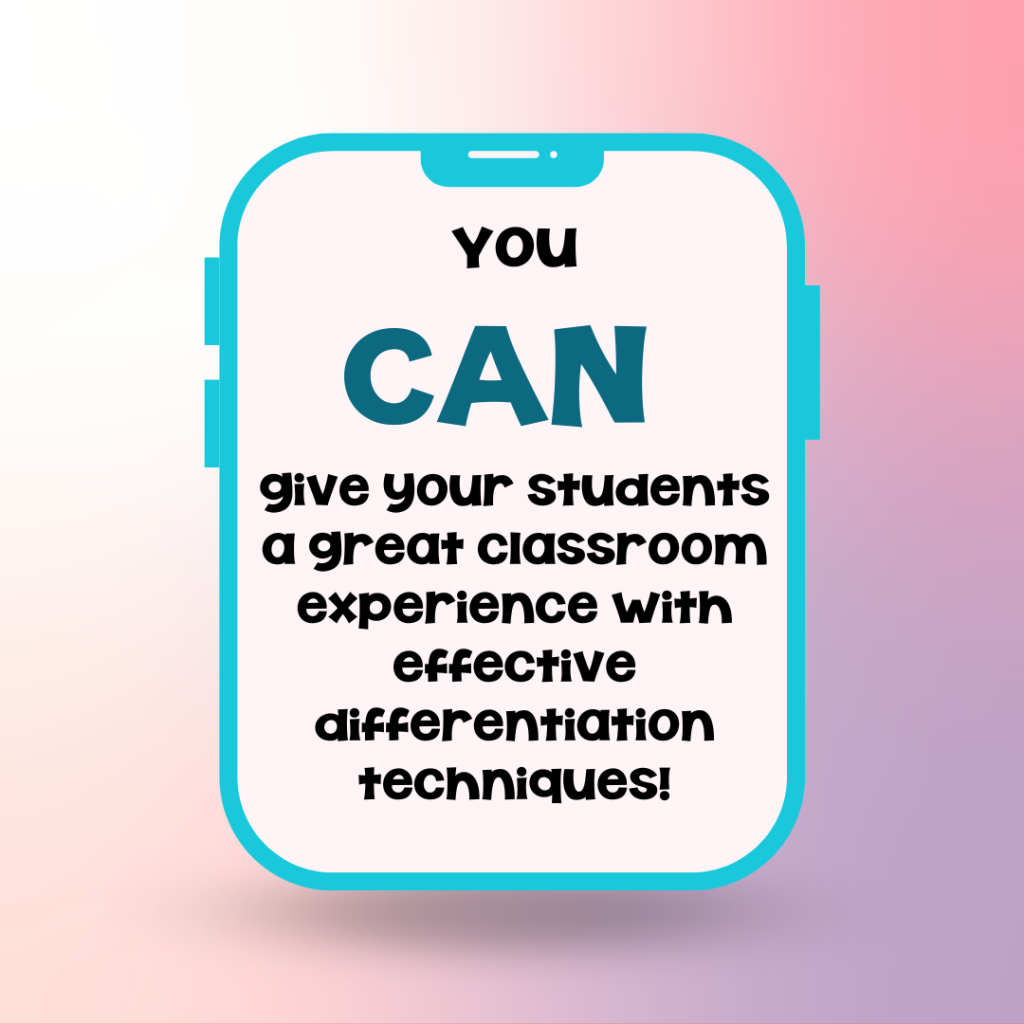Teachers, I know some of you were probably hoping to learn the secret to assisting your English learners perfectly when you signed up for this job. Unfortunately, it doesn’t quite work like that. However, while there’s no magic formula for educational excellence (bummer!), you CAN give your students a great classroom experience with effective differentiation techniques. Today specifically I’m talking about differentiating instruction for English learners. Below are 8 sure-fire ways new elementary teachers can differentiate instruction effectively so their English learners have the best possible chance at success in the classroom.
I know that one of the main challenges that English learners face in the classroom is the language barrier. Many of them may not have a strong grasp of the English language, which can make it difficult for them to understand and communicate effectively. As teachers, it is important for us to find ways to support their language development while still delivering our lessons. Here are some effective approaches.
1. Create a Language-Rich Environment
New teachers can immerse students in a language-rich environment by using visual aids, labels, and word walls to reinforce vocabulary. They can also incorporate language into daily classroom routines, discussions, and activities, providing ample opportunities for English learners to hear, practice, and use the language.
2. Utilize Scaffolding Techniques
Scaffolding involves providing temporary support and structure to help English learners understand and complete tasks. New teachers can use techniques such as modeling, visual aids, graphic organizers, and sentence frames to support students’ comprehension and expression of ideas in English.

3. Implement Cooperative Learning
Cooperative learning activities promote collaboration and interaction among students. New teachers can design group activities and games that require English learners to work together with their peers, engage in discussions, and share ideas. This approach encourages language practice, builds confidence, and fosters peer support.
4. Incorporate Authentic Materials

New teachers can expose English learners to authentic materials, such as age-appropriate books, articles, and real-world resources. These materials provide context and expose students to natural language use, helping them develop their language skills and cultural understanding.
5. Differentiate Instruction for English Learners
It is crucial for new teachers to differentiate instruction to meet the diverse needs of English learners. They can modify assignments, tasks, and materials to accommodate different language levels. This may include providing simplified texts, pre-teaching vocabulary, and offering additional support, such as one-on-one or small-group instruction.
6. Encourage Language Production in English Learners
New teachers should create opportunities for English learners to practice and produce language. They can integrate speaking and writing activities into lessons, such as class discussions, presentations, group projects, and journal writing. Providing constructive feedback and encouraging students to take risks with language will further promote language proficiency. You can even try learning and literacy centers. Click here for my blog that explains exactly how to use this strategy.

7. Collaborate with ESL Specialists
New teachers can seek guidance and support from English as a Second Language (ESL) specialists or professionals who have expertise in supporting English learners. Collaborating with these specialists can provide valuable insights, strategies, and resources to enhance language development in the classroom.
8. Engage English Learners’ Families and Communities
New teachers can involve families and the community in supporting English learners’ language development. They can provide resources, workshops, and materials for parents to practice English with their children at home. Building partnerships with community organizations that offer language support services can also be beneficial. For more information about connecting with families, check out this blog.
Differentiating instruction for English learners in the elementary classroom can be challenging for new teachers, but with these 8 strategies, you can make great strides toward meeting their students’ needs. Creating a language-rich environment, implementing scaffolding techniques, integrating cooperative learning activities, using authentic materials, differentiating instruction through small group work or centers activities, encouraging language production during whole class participation and discussion, collaborating with ESL specialists and engaging families and communities can all help to ensure that English Learner students reach their highest academic potential.
As a teacher, it’s important to not only have instructional strategies in mind when teaching an English learner, but also engaging and inspiring lesson plans; this combination will help to foster higher engagement levels and better overall academic success. Let’s start the conversation on how we can support our English learners so they can reach the stars!
Sound off in the comments below or follow me on social to join the conversation.
Let’s teach!
Lori



No comments:
Post a Comment